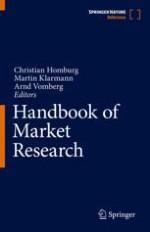2022 | OriginalPaper | Buchkapitel
Dealing with Endogeneity: A Nontechnical Guide for Marketing Researchers
verfasst von : P. Ebbes, D. Papies, H. J. van Heerde
Erschienen in: Handbook of Market Research
Aktivieren Sie unsere intelligente Suche, um passende Fachinhalte oder Patente zu finden.
Wählen Sie Textabschnitte aus um mit Künstlicher Intelligenz passenden Patente zu finden. powered by
Markieren Sie Textabschnitte, um KI-gestützt weitere passende Inhalte zu finden. powered by
